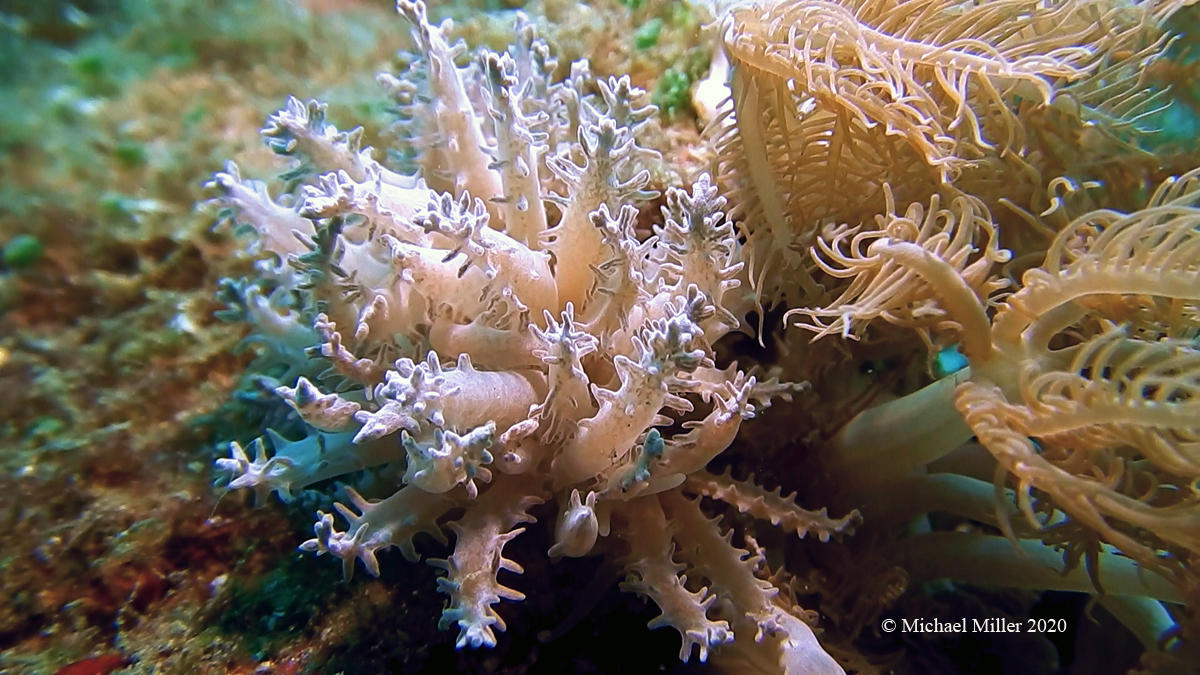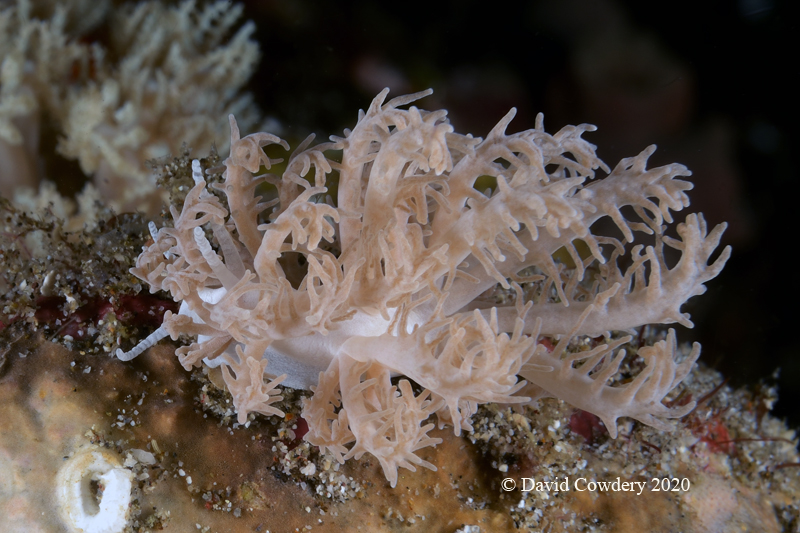 |
Phyllodesmium pinnatum
Image courtesy of Michael MillerFrame Grab from Video
Ambon, Indonesia
|
Image courtesy of David Cowdery Anilao, Philippines  |
Dave is on holiday so you are stuck with the Webmaster for this presentation.
What better way to begin this BOW with a quote from the paper by
Moore and Gosliner (2009) "..Mimicry and camouflage are an important protective measure for nudibranch gastropods. In the genus Phyllodesmium, species have evolved elaborate morphological traits that allow them to be very cryptic among their coral prey..." It has been my experience that the best time to photograph Phyllodesmium in general is at night when they are out and feeding! During the day they seem to be hunkered down in their soft coral habitat and difficult to discern! Don't hold me to this observation as the first Phyllodesmium I ever saw was in the Philippines circa 1980's when it was seen traveling between soft coral hosts during the daytime. I was rather perplexed as to how a "soft coral" could motivate like that! The specimen was retained for further observation at which time it became evident we were dealing with some kind of new nudibranch, certainly unfamiliar to us at the time! I have since seen and photographed many species of Phyllodesmium and always marvel at their adaptive camouflage. Isn't nature amazing folks! Moore, E.; Gosliner, T. M. (2009). Three new species of Phyllodesmium Ehrenberg (Gastropoda: Nudibranchia: Aeolidoidea), and a revised phylogenetic analysis. Zootaxa. 2201: 30-48 |
San Diego, Calif
Jun., 2020
Send Mike email at mdmiller1@cox.net

Attention all you Sluggers, and you know who you are! The NSSI 2nd edition is available in ebook PDF and book form . The hard back version will become available Nov. 1st. Both will cost $65 (individually). You will need to jump through a few hoops to get the electronic version as pdf distribution is protected by Adobe ID!! Please read the following to enable reading your electronic purchase! This new 2nd Edition is updated and reorganized, including 185 new species. Among other features, the new edition includes additional photographs of species, an identification key, and an up-to-date classification reflecting the latest evolutionary relationships. The Indo-Pacific represents the largest expanse of tropical ocean in the world, stretching from the Indian Ocean coast of southern Africa and the Red Sea to the central Pacific of the Hawaiian Islands, Easter Island and the Marquesas. This region supports the most diverse marine fauna of any place in the world for most groups of marine organisms. The nudibranchs and sea slugs are no exception to this rule; there are about 3,000 described species of these organisms in the world and at least 40% of these have been found exclusively in the Indo-Pacific tropics. This book illustrates 2,138 Indo-Pacific nudibranchs and sea slugs, including many undescribed species.
|

|
